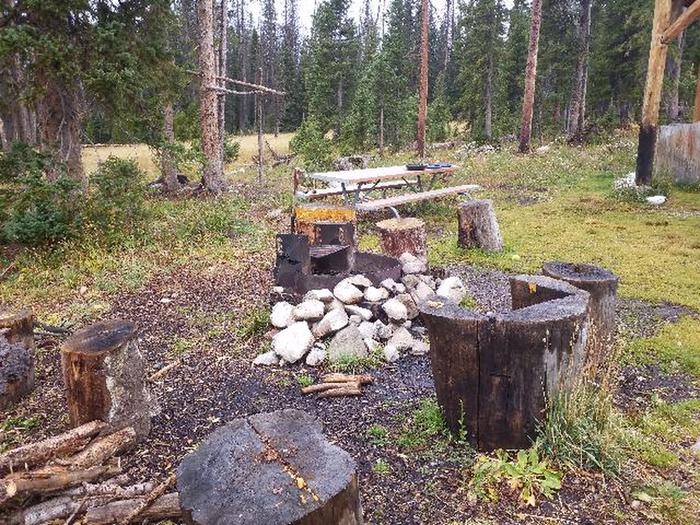Site 001, Loop SNOW SURVEY
Medicine Bow-Routt Nfs & Thunder Basin Ng | Snow Survey Cabin
Type: CABIN ELECTRIC
Enter dates to check availability
Site Details
- Max Num of People: 4
- Min Num of People: 1
- Num of Beds: 4
- Num of Rooms: 1
- Shade: Full
- Bed Type: Bunk
- Checkin Time: 2:00 PM
- Checkout Time: 11:00 AM
Driveway Details
- Driveway Surface: Gravel
- Max Num of Vehicles: 2
- Max Vehicle Length: 0
Need to Know
Black bears (Ursus americanus) are the most abundant and widely distributed of the three species of North American bears. Black bears vary in color from jet black to cinnamon to white, although black is the color encountered most frequently. Given the number and extensive range of black bears in North America, this is the bear species you are most likely to encounter during your visit to the national forests.
Mountain lion facts
The mountain lion is also known as cougar, panther, or puma. Body coloration can range from tan to gray and cubs are usually covered with blackish brown spots.
Adult males may be more than 8 feet long (from the tip of the nose to the tip of the tail), and can weigh between 130 and 150 pounds. Adult females can be 7 feet long and weigh between 65 and 90 pounds.
Generally speaking, mountain lions can be found wherever deer are present. Their usual habitat is steep, rocky canyons or mountainous terrain.
Mountain lions can be found in deserts as well as coastal forests, and from sea level to 10,000-foot elevations.
An adult male's home range is typically more than 100 square miles and females generally use smaller areas, approximately 20 to 60 square miles
If You Get Lost
The best tool needed for survival in the event you get lost outdoors is your skill of advanced planning. You must expect the unexpected and plan accordingly. Even if you are going out for just a few hours, pack enough essentials that you can stay hydrated, fueled and prepared for any type of weather.
Your essentials should include at least:
*More than enough food and water for the activity you plan.
*A compass that you know how to use. You may want a GPS device, but those sometimes do not receive a signal or the battery fails. Cell phones also likely will not work because of a lack of signal.
*Appropriate maps. Study the terrain and your planned route. Know where you are going and how you will return.
*Sturdy hiking boots, clothes that you can layer depending on the weather conditions and additional socks in case the ones you are wearing get wet.
*A blanket, flashlight, matches kept in a water-resistant container, and other items that will help you survive overnight if necessary.
*Check with the local ranger district or forest office for special warnings, such as fires in the area, bear sightings, flooding, trail or road closures, etc.
*It’s also important that once you have planned your outing, tell someone. Give them exact details of where you are going, the trail you plan to follow, when you will return, the vehicle you are driving (and where you plan to park) and how many people will go with you – do not go alone.
If you do become lost your most important tool is keeping a positive mental attitude.
Self-rescue tips:
If after careful planning and consideration you decide that you should try to rescue yourself, here are some tips to remember:
*Stop and rest when you start to feel tired. Don’t wait until you are exhausted.
*Your body can’t hike hard and digest food at the same time. Rest in the shade for at least 30 minutes when you stop to eat. If you are still tired after 30 minutes, continue to rest.
*Make sure to drink enough water to avoid dehydration. Symptoms of dehydration could include thirst; dry/sticky mouth; not urinating very much or dark yellow urine; dry, cool skin; headache; muscle cramps.
*Stop and fix small problems while they are still small. If you ignore your body and keep pushing, the pain or illness will only get worse and make recovery more difficult.
*Avoid hiking between 10 a.m. and 4 p.m. on hot days. If you are on a trail between those hours, find a shady spot and stay there until the temperature cools down. Adjust your hiking pace to one you can comfortably maintain and rest when you feel the need.
Remember: You are responsible for your own safety and for the safety of those around you.







